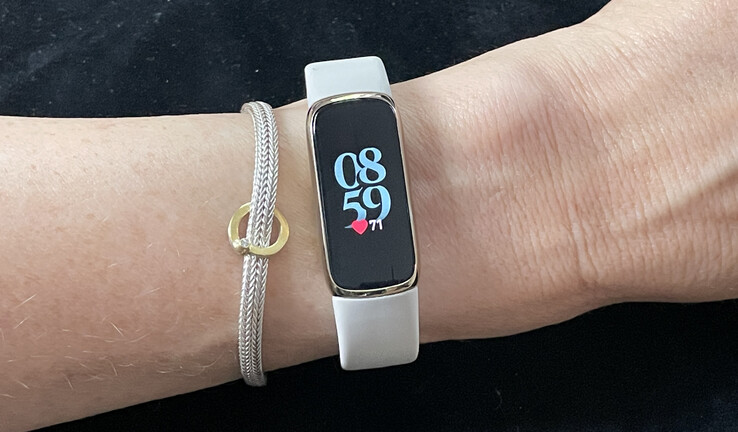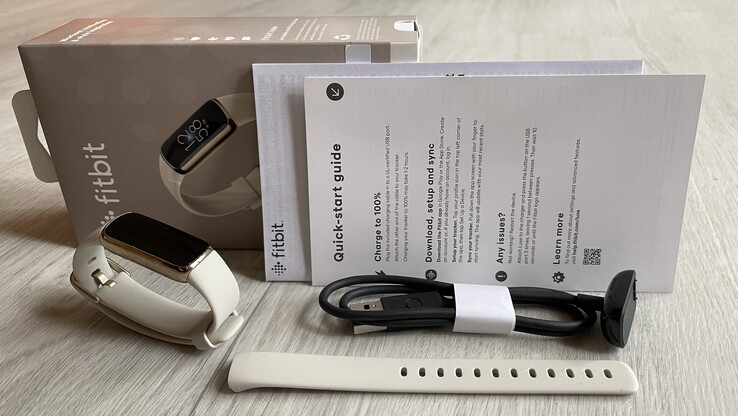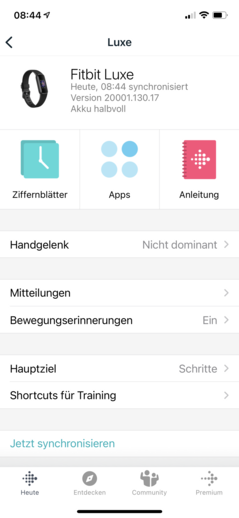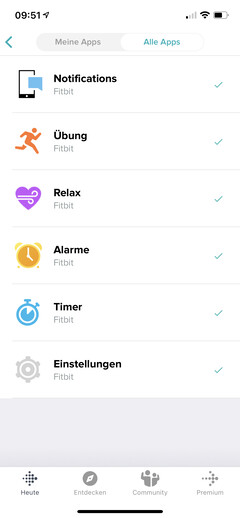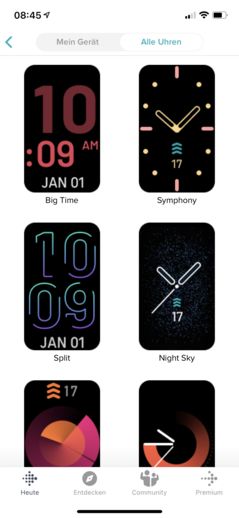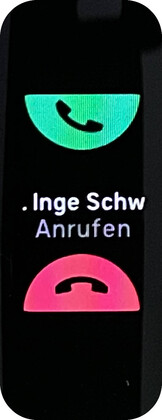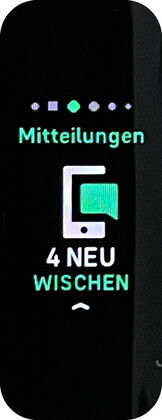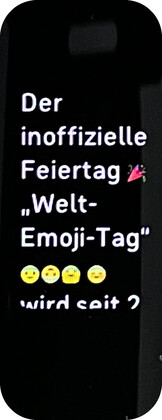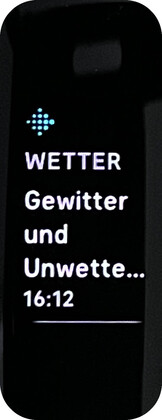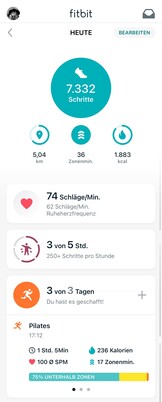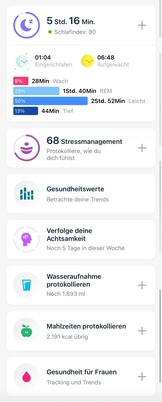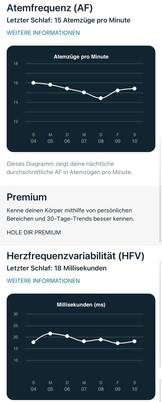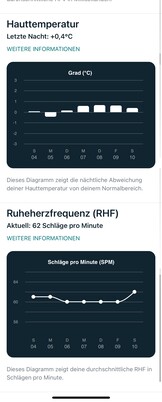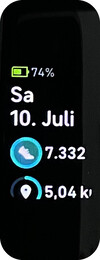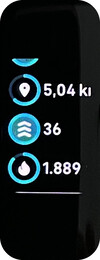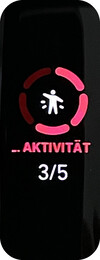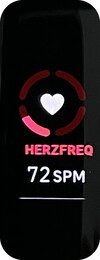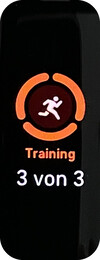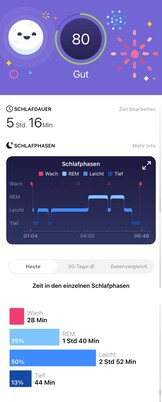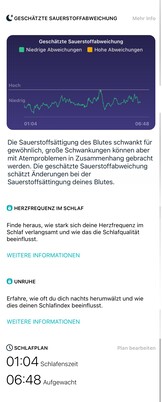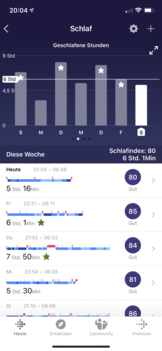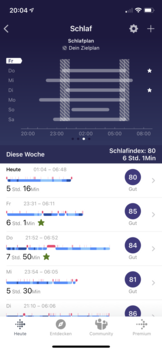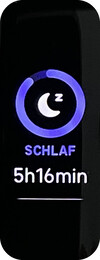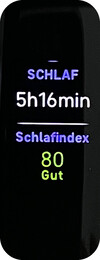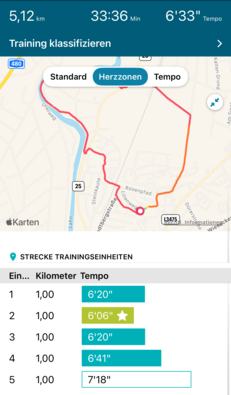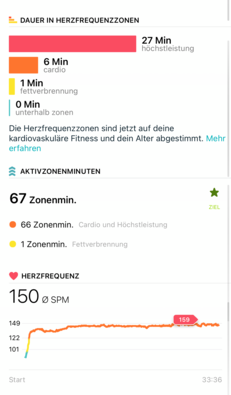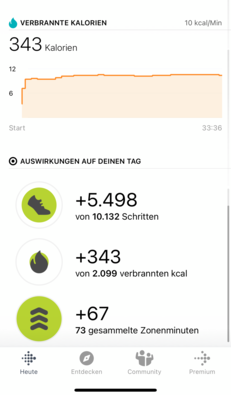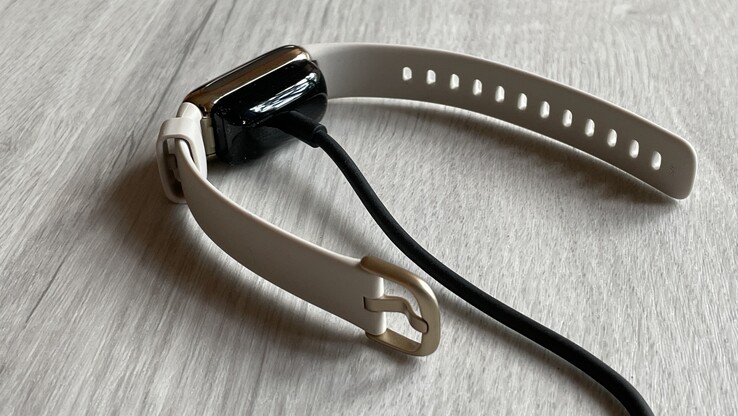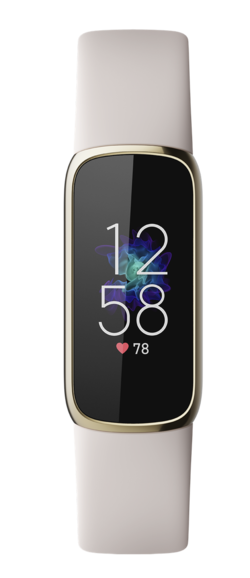Fitbit Luxe: Fitbit's elegant fitness tracker in review
Case and connectivity – AMOLED with automatic brightness
With the Luxe, Fitbit has expanded its range of fitness trackers. These currently include the Inspire 2, the Charge 4, and the Ace series for children. In terms of looks and functionality, the Luxe is most similar to the Inspire 2, which is 50 Euros cheaper (~$59). The latter's case is made of plastic, and the display is a grayscale OLED like on the Charge 4. The Luxe has a color AMOLED that automatically adjusts its brightness to the ambient light. The case is made of gold-, platinum- or graphite-colored stainless steel, while the buckle of the silicone bands is made of anodized aluminum. They have a special strap connector, but they can be interchanged. The Special Edition of the Luxe already comes with a replacement band; the standard band in this case is a gold-colored link bracelet, for which Fitbit has partnered with the jewelry brand gorjana.
Both the Inspire 2 and the Luxe are water-resistant to 50 meters. Fitbit enhances the Inspire 2's optical heart rate sensor by allowing it to measure blood oxygen saturation (SpO2) on the Luxe. Fitbit states 10 days of battery life for the Inspire 2 and 5 for the Luxe. One feature of the Inspire 2 that the Luxe is missing is the Tile technology, which allows you to find the Inspire 2 again if you don't remember where you last placed it.
Fitbit doesn't disclose the storage capacity. However, the specifications for the Luxe and the Inspire 2 coincide: According to these, both store the daily data for a total of 30 days as well as detailed minute-by-minute movement data for a period of seven days. This is relevant, for example, if you don't synchronize the fitness trackers regularly. On the tracker itself, you can only see the data for the current day in any case.
Setup and handling – Notifications with emojis
The Fitbit companion app is available in the App Store as well as in Google's Play Store. Fitbit advertises the Luxe - like the Inspire 2 - with Google Fast Pair. This technology is meant to speed up pairing with Android devices. At least the Luxe actually connected quickly to an Honor V20. In addition, we connected the wearable to an iPhone 12 Pro.
You can deactivate activity reminders or specify time and weekdays. The display doesn't have an always-on mode. It lights up when you tap the display twice or when you raise your arm. The gesture activation can be disabled as well. Swiping downwards on the display allows you to lock it, to disable notifications, or to activate a sleep mode that turns off notifications as well as the gesture activation.
Horizontal swipes take you to the notifications, workouts, breathing exercises, an alarm clock with up to eight alarms, a timer, and a stopwatch. When setting these up, Fitbit uses haptic feedback, which noticeably simplifies minute-by-minute adjustments. The vibration strength for the alarm can be adjusted in three levels. Swiping up reveals the dashboard with the daily activity data. Several watch faces display individual activity data as well. When you tap the watch face, the screen toggles between steps, heart rate, calories burned, active zone minutes, or the date, depending on the watch face.
Telephone and notifications
The Luxe displays incoming notifications and also longer text messages including emojis, for example from WhatsApp. When it's connected to an Android smartphone, you can reply with predefined text messages.
Calls can be rejected or accepted in order to take them on the smartphone thereafter. The term "Call" that's displayed on the left side of the screen is misleading. This refers to accepting the incoming call.
Health and fitness – Fitbit measures skin temperature
The Luxe counts the number of steps and uses this to determine the approximate distance covered, but not the altitude meters climbed, since it doesn't have a barometric sensor. Fitbit estimates calorie consumption based on the daily workout and activity data along with personal data such as age, gender, and weight.
Throughout the day, Fitbit tracks what it calls "Active Zone Minutes". It doesn't matter if you log the activity or not, but an intense workout naturally increases the number of active zone minutes faster. If you wish, you can set the tracker to vibrate when your heart rate rises and reaches a higher heart rate zone, in order to confirm the effort's success. In our test, the Luxe reported that a higher zone had been reached during a brisk walk around the block, for example. The pedometer tended to count a few steps less in the test; however, the deviations were below 3%.
Fitbit manages to be convincing once again as a physical and mental well-being monitor. The health values that are displayed under the smartphone dashboard's section of that same name are particularly clear. The diagrams for resting heart rate, heart rate variability, respiration rate, and changes in skin temperature are partly only visible when a comparison can be made using data from several nights. The oxygen saturation chart was still missing during the test period, but Fitbit plans to deliver the SpO2 measurement feature via an update.
The premium subscription of $9.99 per month provides additional analyses for sleep and stress management, as well as around 150 workouts with video instructions on the smartphone app, among other things. Without a subscription, however, Fitbit doesn't limit the essential assessments in a noticeable way. Fitbit grants a six-month trial period for the subscription. In order to be able to draw a better comparison, you shouldn't activate the subscription on the first day, where applicable.
The Fitbit app can't be linked with Apple Health or Google Fit. However, there's a third-party app called FitToFit for Android that transfers data from Fitbit to Google Fit.
Sleep tracking
The sleep log breaks down the different sleep phases and their proportion in relation to the total sleep time. In another graph, Fitbit depicts the deviations in oxygen saturation during sleep. Fitbit marks higher deviations in a different color in order to draw attention to potential irregularities in breathing. In the log included in this review, the deviations only just reached the limit beyond which Fitbit would highlight them in color.
The Fitbit app also displays the sleep index, sleep phases, and their proportion of the total sleep time in a weekly overview. The screenshot to the right additionally compares the time at which the user fell asleep with the time that was set as the target.
Workout tracking
In the app, you select six out of a total of 20 sports and transfer them to the workout app on the tracker. These include interval training with individually configurable durations for sets and breaks, as well as for the number of repetitions. You can set the tracker to vibrate after one or several kilometers in sports like hiking, running, or cycling.
The Luxe recognizes common motion patterns and automatically tracks the activity. It doesn't always hit the mark here: The Luxe correctly recognized a walk, while it considered a brisk walk to the bakery to be a training session on the elliptical trainer. However, this is somehow understandable, and it was easy to change it to walking on the smartphone.
The small tracker lacks GPS. However, if the smartphone is connected, the route is included in the log afterwards.
For some time now, our wearable tests have included high-intensity interval training (HIIT) with fast variations. We use this to test how well the optical PPG sensor detects fast-changing heart rhythms, and we compare the data recorded with an H10 heart rate sensor from Polar. In this test, the Luxe deviates strongly from the actual heart rate; however, basically only sports watches like the Polar Vantage V2 or the Venu 2s from Garmin are good at this. When running, the Luxe registers the frequency reliably and remains constantly only about two beats per minute below the Polar heart rate sensor.
The heart rate chart corresponds to a different day from the running log mentioned in the previous section. Graphically, it's also a bit unfortunate that the Polar H10's curve is shown in red in the upper chart and in yellow in the lower chart. This is due to Fitbit changing the color scheme depending on the heart rate zone.
Battery life
Fitbit doesn't specify the battery capacity and states a runtime of up to 5 days. In the test, the battery even lasted 8.5 days; however, the oxygen saturation measurement wasn't active yet. With a remaining capacity of 4%, the battery was charged to slightly more than 50% after half an hour. The full capacity was reached after 100 minutes.
Pros
Cons
Verdict
The Fitbit Luxe is an elegant tracker for health and fitness. The overall package also includes the analyses provided by the Fitbit app, which are detailed and informative even without a premium subscription.
However, $149 is a lot of money for a fitness tracker, and on top of that, the Luxe is comparatively poorly equipped in terms of functionality: The Luxe can't be used as a flashlight, a remote control for smartphone music, or for anything else that wearables are used for nowadays. Fitbit's own portfolio includes the Charge 4, a cheaper and better-equipped tracker that even comes with GPS.
The Fitbit Luxe is currently the most stylish fitness tracker on the German market.
The Huami Band 5 or the Xiaomi Smart Band 6 are similarly slender and attractive compared with the Luxe, but they are better equipped with weather information and remote controls for the smartphone's music and camera (not on all smartphones), and they cost less than a third of the Luxe's price.
It won't make sense to everyone why you would then spend $149 for a worse-equipped tracker. Nevertheless, a wearable is ultimately also a fashion accessory. If you opt for the Fitbit Luxe, it's probably because you prefer Fitbit's dashboard, but also because there's hardly a more elegant fitness tracker available at the moment.
Price and availability
The Fitbit Luxe is available in black/graphite stainless steel, orchid/platinum stainless steel, or lunar white/soft gold stainless steel like our review sample for $149.95. The Fitbit Luxe Special Edition with a gold-colored stainless steel link bracelet from the jewelry brand gorjana costs $50 more. The Special Edition comes with a peony classic silicone band. At the time of writing, you can find all colors of the Fitbit Luxe, including the Special Edition, on Amazon.




